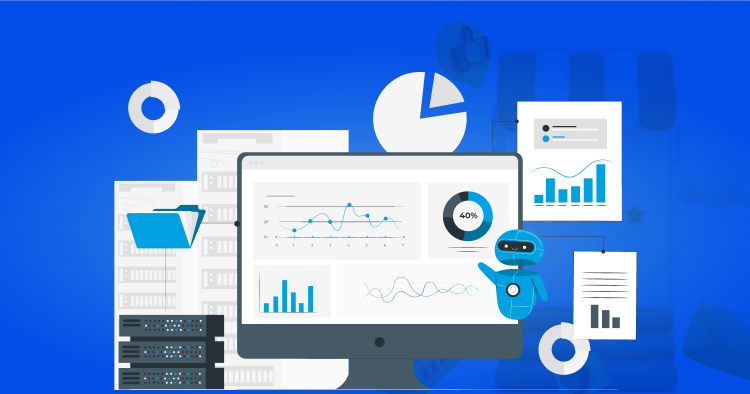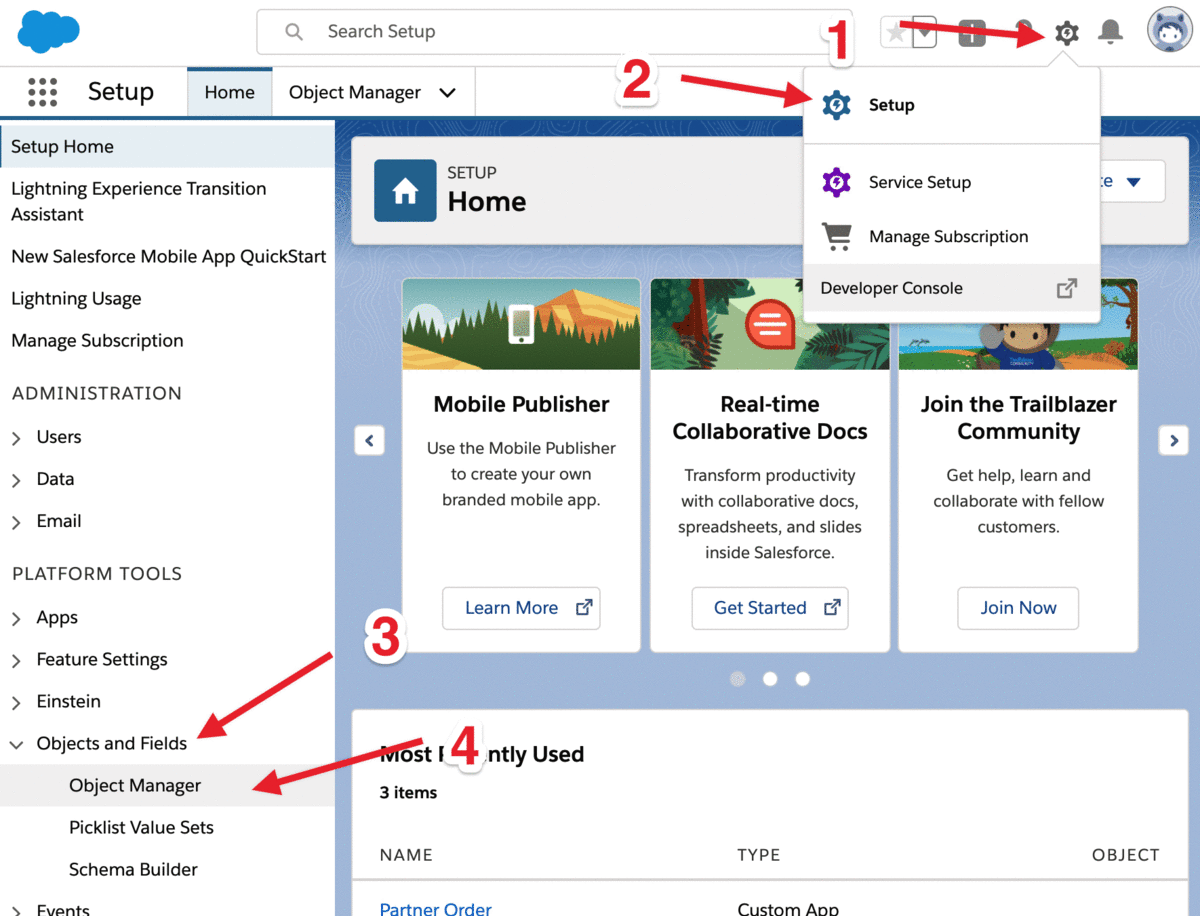Best Practices When You Migrate Data To Salesforce Commerce
Last Updated | April 22, 2023
Table of Contents
Over 150,000 companies use Salesforce for data analytics, integrated sales management, and automated marketing. The Salesforce B2B Commerce Integration process is straightforward, but migrating data from an existing system presents technical obstacles.
Most people turn towards salesforce commerce cloud development firms for data migration tasks because they are more efficient in their work.
Reading this article will be a game-changer if you want to achieve your data analytics goals and transform your company into a data-driven enterprise. In that light, we’ll discuss the benefits of moving your data to Salesforce and data migration salesforce best practices. On the other hand, you can get help from a salesforce commerce cloud consultant.
Why do You Need to Migrate Data to Salesforce? Data Migration Salesforce Best Practices
With Salesforce Commerce Cloud integration, your company will have a lot of leeway in connecting to its many third-party applications. Integrating Salesforce allows you to gather information about your business from anywhere.
Salesforce Commerce Cloud Implementation provides a great deal of adaptability and benefits to enterprises throughout the world.
As we’ve mentioned, data migration from one system to another is possible. Advantages such as dependable security, the flexibility to make changes without programming, and the possibility of rapidly developing apps are baked into Salesforce’s robust cloud-based infrastructure.
Data migration refers to transferring information from one system or platform to another inside an organization.
We have compiled a list of the most significant gains from moving your data to Salesforce Commerce Cloud:
- Gain efficiency by eliminating the time-consuming and error-prone process of keying in data by hand.
- Data from numerous platforms can be imported into Salesforce, allowing for a complete picture of the customer.
- Every account, contact, task, event, and opportunity associated with a lead in Salesforce can be seen. This provides quality data for your business before contacting potential customers.
- Teamwork is easier with Salesforce’s convenient tools for sharing information and coordinating efforts. Clients, territories, and other business-related topics can be discussed safely in “Chatter” with selected individuals and teams.
- Automation of processes occurs when software and hardware are designed to work together. Automated salesforce commerce cloud development processes can complete routine tasks more quickly and accurately than humans can. It frees up more time for socializing amongst people.
- As a modern cloud-based service, Salesforce Commerce Cloud Optimization improves businesses by helping them gain value. It helps them secure the data and make better decisions in a safe, flexible, and reliable environment.
- Since Salesforce is a web-based service, it can be accessed from any location with an active Internet connection. With the Salesforce B2B Commerce Integration, you and your team can stay in constant contact no matter where you are.
Data Migration Salesforce Best Practices
The primary purpose of Salesforce Commerce Cloud migration is to ensure that data in a single repository is always up-to-date or that data kept in several locations are always in sync.
Below are the best data migration salesforce best practices to follow.
Create a Data Governance Strategy
Making and sticking to a data governance plan is one of the most fundamental things you should do. It ensures a smooth data migration along with Salesforce Commerce Cloud Support. Significant fines for noncompliance with regulations like GDPR highlight the importance of sound data governance practices.
Read Also How to Transfer Shopify Domain
Your company needs a defined procedure to ensure everyone is on the same page regarding salesforce commerce cloud development and data migration. The strategy might be an agreed-upon arrangement between the teams responsible for Salesforce and the integrated system, or it can be a part of a more extensive enterprise-wide data management program.
Setting Up Should be Timely
The level of preparation given to a data migration can significantly impact how well it goes, either positively or negatively. Make a thorough list of the information you want to transfer to a new location, and decide all the procedures that need to be taken to finish the process.
The best option is to hire a salesforce commerce cloud consultant who can better guide the process.
Read Also Square to Shopify Migration
Focus on Data Quality
If the quality of your data is higher, you will be able to generate more actionable insights into your e-commerce operations. Businesses that are data-driven and successful use business intelligence (BI) tools to acquire real-time insights into various e-commerce tasks such as sales, marketing, customer support, inventory systems, and warehouse management.
Read Also Etsy To Shopify Migration
Make Templates for Your Use
By creating templates, you will have the ability to repeat the migration as many times as necessary. In this step of Salesforce Commerce Cloud migration, you essentially document your most effective procedures for future data migrations.
Check that the Data Paths are Allowed
It will be easier to map the data to the appropriate location in your destination environment if you attach tags to the data in various places.
Verify Correct Transfer
The last step in data migration salesforce best practices is to examine the freshly compiled data repository to ensure that the data linkages and file types have been preserved. Data can become corrupted if it is moved incorrectly, and you will not receive the benefits that you want if the data is corrupted.
How to Set up Salesforce Data Migration?
Follow the below steps to set up Salesforce Data Migration:
Step 1. User Set Up
The Salesforce Commerce Cloud database software allows companies the flexibility to set roles for employees across all departments, as well as allow access to those individuals and explain their tasks. However, all employees ought to have their accounts on Salesforce. The following procedures can be carried out to assign responsibilities to staff members:
- To begin, select the Home tab.
- Proceed to the category labeled Administration.
- Simply clicking on the Users category will cause it to expand.
- Choose the Users option.
- A new user can be given a role by clicking the New User button, or current permissions can be altered by changing the users listed in the drop-down menu.
Step 2. Custom Feld Feature
You are required to build custom fields to maintain control over your data before you can begin setting up Salesforce Data Migration. You can create standards for your new database if you include custom fields.
You also obtain interoperability between older and more modern storage systems, another advantage of using this custom fields capability. You can only save your previous data if you have custom fields. Carry out the procedures listed below to add fields:
- Select the Setting icon to see the Configuration menu.
- Move the pointing device to the tools available on the platform.
- Simply select Objects and Fields with your mouse.
- Choose the Object Manager option.
- Choose items from the Object Manager’s menu, such as the Account option.
- Change the settings for the fields and the relationships.
- You can either create new custom fields or add existing ones using the images below as a guide.
Step 3. Customization
In addition to this, personalization and customization options are available through Salesforce B2C Commerce Cloud Integration. This means that you can add more advanced capabilities to the database and storage system that is already in place.
The customer relationship management tool gives you access to many devices, allowing you to add, delete, update, and improve the structure of your current records. Putting into action the following procedures to customize:
- Simply select the Setting icon to see the Configuration menu.
- Move the pointing device to the tools available on the platform.
- Simply select Objects and Fields with your mouse.
- Choose the Object Manager option.
- Choose items from the Object Manager’s menu, such as the Account option.
- Modify the page layouts as needed.
- Make new templates or add existing ones using the examples in the accompanying pictures as a guide.
Salesforce Commerce Cloud Optimization is crucial for the overall value and performance of the store.
Difficulties with Data Transfer
The degree of complication in executing this can vary depending on some factors. Sending larger data sets will take longer, making verifying their accuracy more challenging.
There is a risk of data loss if the transition is not handled correctly, which could compromise the reliability of the new platform. These types of challenges lead to data migration salesforce best practices.
Salesforce Commerce Cloud migration can be simple or complex, depending on the transferred data. Since simple attributes and other bits of information won’t have any relationships that need to be preserved, managing them will be more straightforward.
Migration metadata and other interactions between parents and children will be more challenging.
- Stakeholders need to consider the time and effort required to relocate data. An article in Forbes claimed that “recent research shows that only 36% of data transfer projects stay on budget and only 46% are done on time.”
Data migration projects have a way of growing more significant than their initial estimates, so it’s in the best interest of those in charge to understand their proper scope.
- However, neither the data’s relocation nor the means of its relocation have been predetermined. The ownership of data and the potential uses of technology with that data are fundamental concerns in any data transfer attempt.
Businesses need a clear purpose to allocate resources when they migrate details. Companies sometimes have what they need to migrate successfully, including the right software and Salesforce Commerce Cloud Support.
- The same Forbes article also claims that 44% of respondents could not successfully migrate their data due to a lack of understanding of fundamental technological concepts. However, the problem could be solved by hiring a salesforce commerce cloud consultant.
- Ignoring the data’s inherent complexity. When it comes to business challenges, complex information is right up there. The linkages between data in a Salesforce system can be pretty intricate, with parent-child relationships, triggers, and workflows all being possible.
- There currently needs to be a data manager. Organizations need more data oversight. Identifying who will be in charge of each data collection is crucial, as is conducting a thorough evaluation of all currently existing workflows and triggers related to the data being transferred to ensure their accuracy and seamless functioning.
FAQs
Folowing are the FAQs that you should know:
What is the Best Sequence for Migrating Data to Salesforce?
During data transfer in Salesforce Commerce Cloud Implementation, start with migrating users, accounts, and opportunities. Before filling in the template, make sure your data is correct.
Where does Your Data Live in Salesforce?
After successful Salesforce Commerce Cloud Implementation, data can be stored in custom objects built on and expand the capability of generic things. You can navigate the files using the tabs, the search bar, or the lists. The bulk of your information in Salesforce will be kept in records and sorted by objects.
Data Storage VS. File Storage in Salesforce: What’s the Difference?
One can store files in Salesforce Commerce Cloud file storage, while another can store data. The term “file storage” refers to the space set aside for storing documents (e.g., attachments, user photos, and documents). Records are kept in data storage, a specially designated area (e.g., Accounts, Opportunities, and Cases).
Conclusion
Companies gain from Salesforce Commerce Cloud integration, but it can have disastrous consequences if it fails. A salesforce commerce cloud consultant from a reputable firm is necessary for successful Salesforce data migration.
You may trust the certified Salesforce partner with your most challenging integration projects without worrying about a failed implementation. Customer retention, increased productivity, simplified data access, and improved data transfer success are all facilitated by Salesforce integration.
While migrating data to Salesforce may seem overwhelming initially, it is relatively easy if you have the proper knowledge. We have elaborated on data migration salesforce best practices to make your work easy and eliminate the chance of any mistakes.
With all the data available on the site, you can get the most out of Salesforce B2B Commerce Integration.












